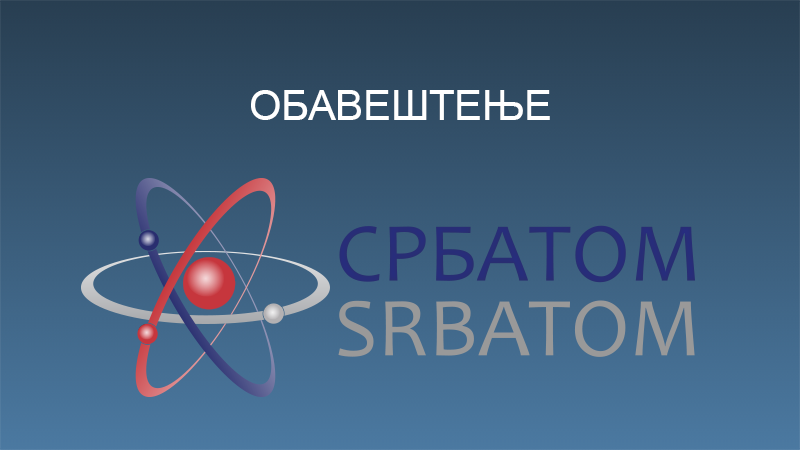Nuclear facilities are designed in such a manner that the earthquakes and other external events cannot impair their operation. In France, the nuclear power plants are designed to withstand an earthquake twice as strong as the 1000-year event calculated for each site. It is estimated that, worldwide, 20% of nuclear reactors are operating in areas of significant seismic activity. The International Atomic Energy Agency (IAEA) has prepared the Safety Guide on Seismic Risks for Nuclear Power Plants. The systems that are used in planning are diverse and include the Probabilistic Seismic Hazard Assessment (PSHA), which is recommended by IAEA and widely accepted. The applicant for the permit to construct a nuclear power plant has to submit detailed assessments of the most severe external events including earthquakes, which are likely to occur during a nuclear power plant life-cycle.
Following the accident in Fukushima, the nuclear industry acknowledged the significance of the instrumentation in preventing the accidents due to external events (such as earthquakes or floods) from evolving into a severe accident. As a result, all instrumentation components (power supply, cables, sensor, etc.) have to be examined in order to ensure that the power supply sources (stationary and movable diesel generators) are protected from the external events, and, thus, available at all times. These systems are well protected from the external hazards by being placed in a special concrete and steel buildings, and, if necessary, can perform residual heat removal from a nuclear reactor for 72 h without human intervention.
In Japan, due to frequency and magnitude of earthquakes, the seismic issues during siting, designing and constructing the nuclear power plants are addressed with due care. Seismic design of such facilities is based on the criteria which are far more rigorous than those applied to non-nuclear facilities. The power reactors are built on stable hard-rock foundations (not sediments) so as to keep the effects of seismic shaking as low as reasonably achievable.
The nuclear power plants in Japan are designed to withstand certain earthquake intensities and therefore equipped with seismic detectors. For the earthquakes reasonably expected to occur in a nuclear power plant site, if the detectors register ground motions of a set level, the automatic safety systems for immediate shutdown are activated. In practice, the systems will be activated to automatically bring the plant to an immediate safe shutdown.
In case of major seismic motions in the ground in the area with nuclear power plants, whose likelihood is rather low, the power plants have the safety systems for swift reactor shutdown without radioactivity releases. In practice, this means that the reactor vessel, control rods and the reactor core with the fuel will not undergo any damage.
In march 2011, eleven operational nuclear units were automatically shut down during the major earthquake in Eastern Japan. Afterwards, the nuclear accident in three units of Fukushima Daiichi Power Plant due to 15-meter tsunami were rated as INES 7 (the highest level).
As a response to the events in Fukushima, the U.S. Nuclear Regulatory Commission (NRC) conducted the inspection oversight in all nuclear power plants in the USA in order to confirm that the key equipment and materials are adequate and properly installed, tested and maintained in order to respond to a major earthquake, flood or complete loss of external power supply. In Europe on the other hand, all nuclear power plants underwent so called “stress tests”, or extraordinary nuclear safety evaluations in case of force majeure, which resulted in the consolidation of all nuclear power plants in terms of their resilience.
In the past, both in the USA and in Europe, the nuclear reactors of both western and Russian design, have been subjected to seismic activities without suffering any damage. The nuclear reactors in San Onofre in California continued its operation during the earthquake of 6.6 magnitude in 1994 when the epicenter was at approximately 100 km distance from the power plant.
The 6.9 magnitude earthquake in Armenia in 1988 resulted in at least 25000 casualties, and was felt in the Armenian nuclear power plant with two units approximately 75 km south of the epicenter. Both units with nuclear reactors of Soviet design continued with normal operations and suffered no damage. This was the first nuclear power plant specially designed for seismic areas which started with its operations in 1976.
The 7.9 magnitude earthquake that hit the southwestern Chinese province of Sichuan in 2008 resulted in no damage and no radioactivity release in the nearby military nuclear facilities.
Since Akkuyu nuclear power plant, which is being constructed, was hit by 7.8 magnitude earthquake two days ago, at this point, only the structures under construction, the cranes, the equipment and alike can suffer damage. The Akkuyu nuclear power plant is of Russian design of the latest generation with seismic robust features and the combination of the active and passive safety systems in case of an emergency event and the special fireproof core catcher vessel in case of a nuclear reactor core melt.


Аутори: Слађан Велинов, директор Директората за радијациону и нуклеарну сигурност и безебедност Србије и др Ђорђе Лазаревић, стручни консултант за нуклеарну енергетику
*Подаци у тексту су коришћени из седећих извора: International Atomic Energy Agency, World Nuclear Association, US Nuclear Regulatory Commission, International Energy Agency.

